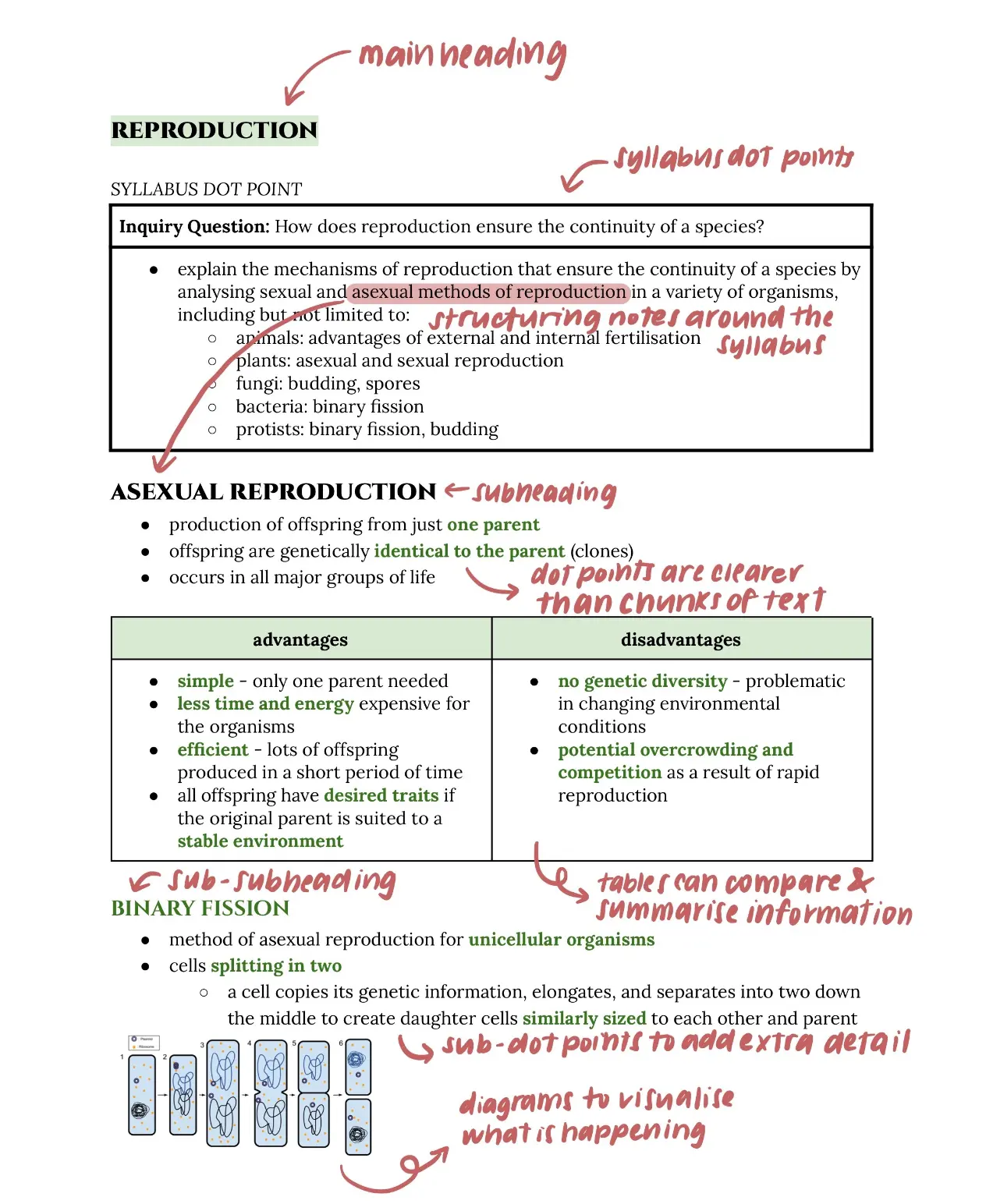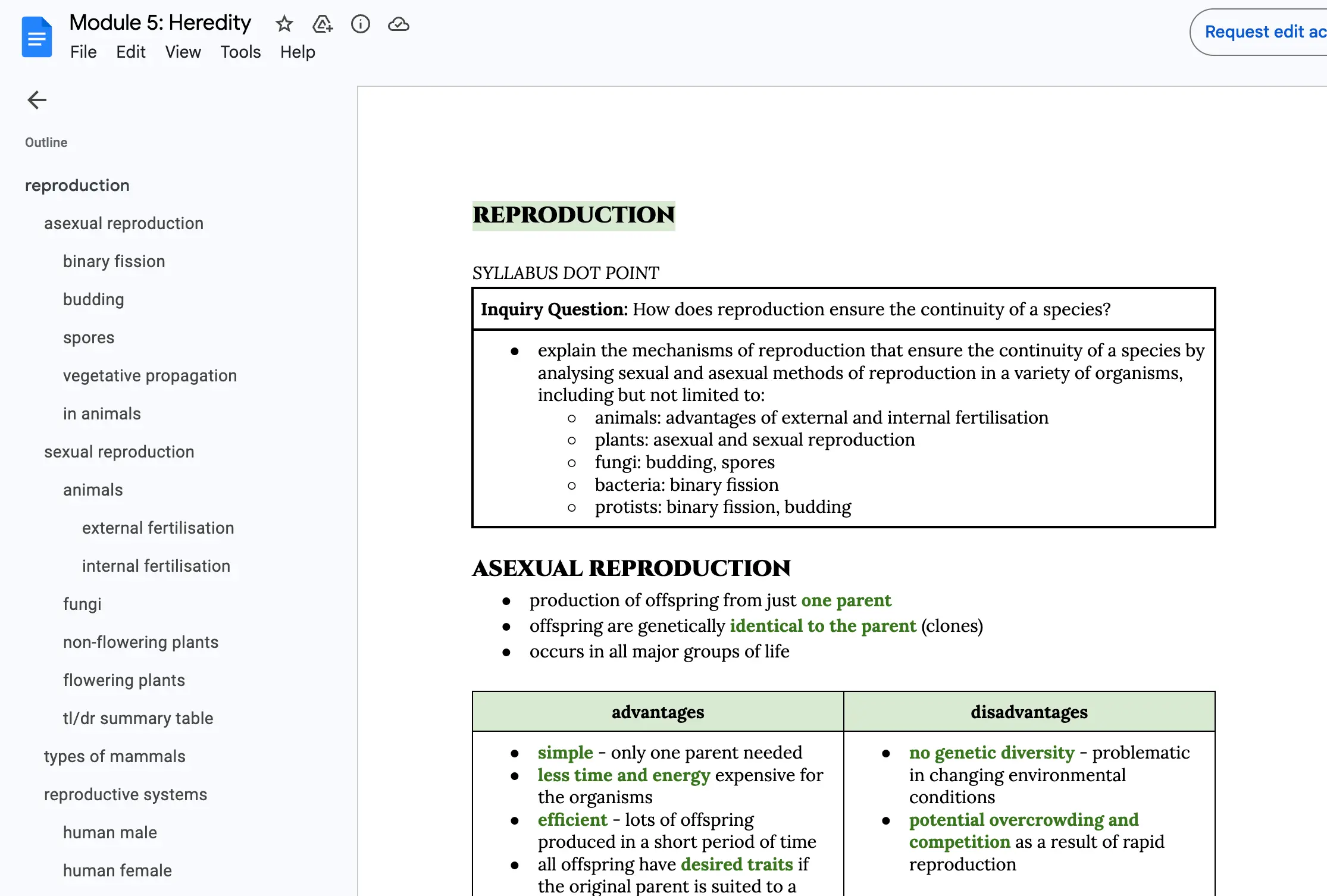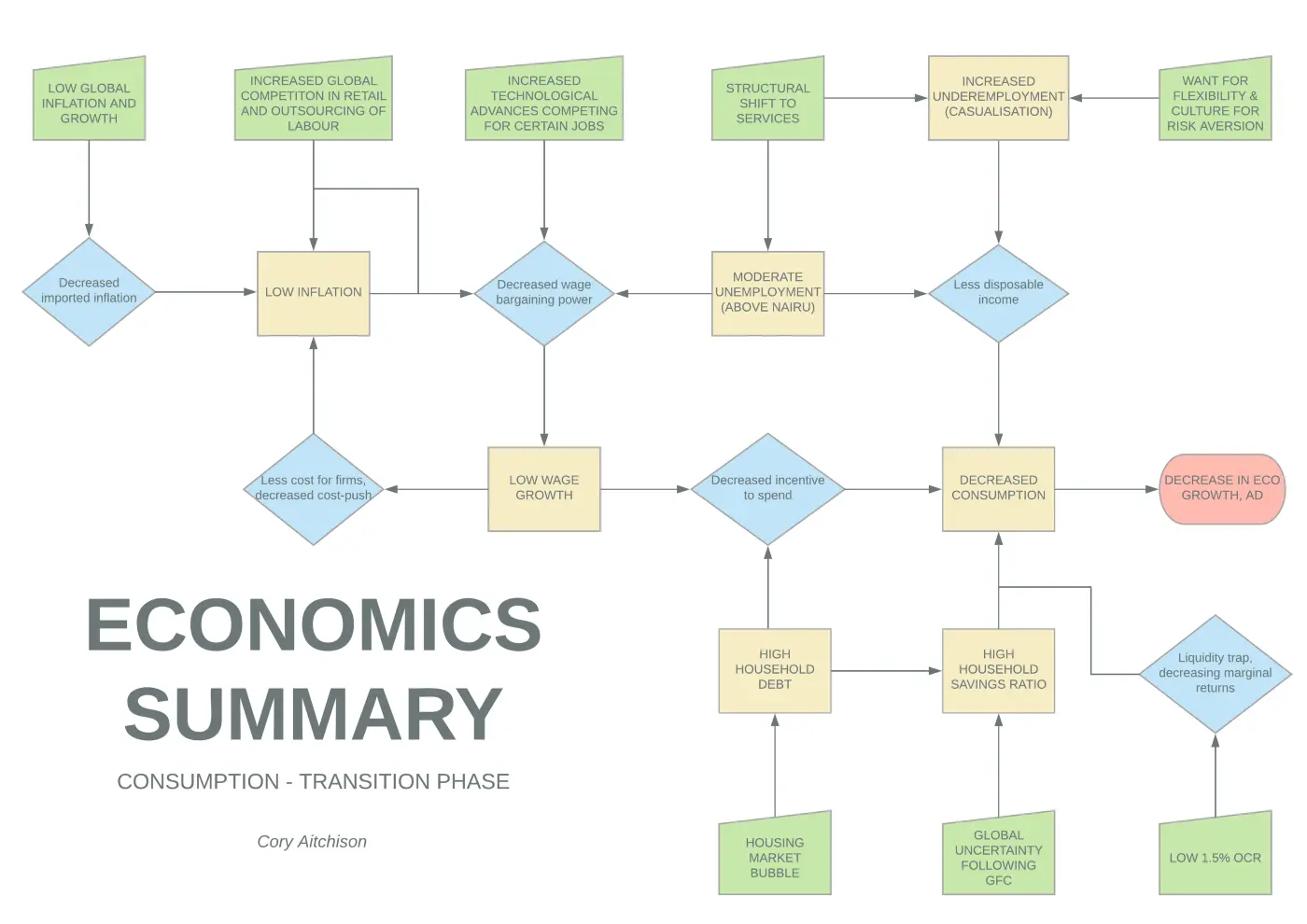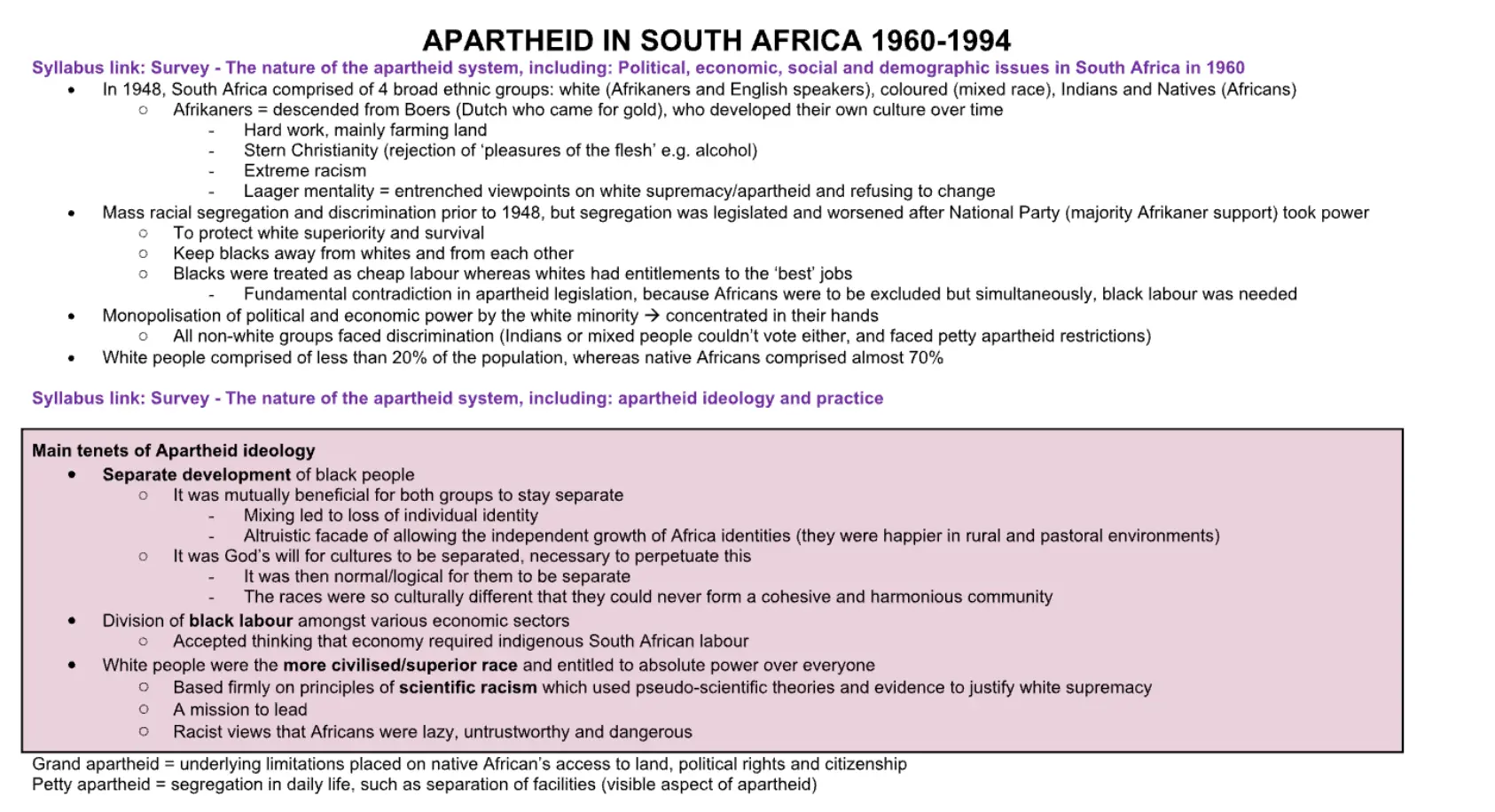“How to write notes for the HSC” - a common struggle
You’re not alone if you need some help with note taking for the HSC - personally, Year 11 me had no idea how to do it. My notes were beautiful, sure - I had a set of colour-coded and handwritten notes for each subject, filled with copied information from the textbooks, covering all the content. But when exam season came around, I still found myself struggling to learn, understand, and remember the content. (In fact, everything seemed to evaporate from my brain). This wasn’t ideal, to say the least, because the whole purpose of writing study notes is to be able to do well in my exams, right?
I consulted several sources, including example notes I inherited from a senior who graduated two years ago, my smart friend Natalie (hi, Natalie!), and my Project Academy tutors. Rounding up everyone’s knowledge, I finally figured out how to create a set of KILLER study notes for each subject that carried me through Year 12. And I’d love to share.
Read on if you’d like to make notes that are:
- Neat and structured
- Effective for revision, and finally,
- Lifesaving for that one friend who didn’t listen in class and is panicking the week before your exam block!
Tip 1 - Know Why You are Making Notes and Do It Your Way!
Before we start on any tip, let’s consider something so crucial yet often overlooked - what exactly is the purpose of writing notes?
Can’t we just use a textbook?
Why textbooks are (sometimes) bad…
When making study notes, many HSC students fall into the trap of copying textbook passages. The truth is, this doesn’t do much aside from giving you an illusion of productivity.
First of all, textbooks are designed to teach you the content in a highly detailed manner through additional case studies and resources. They’re definitely not concise enough for revising (just think about how thick those things are).
Secondly, they’re not YOUR notes! Since you didn’t write them, they might not be written or structured in a way that makes perfect sense to you.
This brings me to my third point - the act of restructuring notes is an active process whereas copying paragraphs directly from a textbook is passive. If active vs. passive recall is interesting to you, check out this article.
So…why do we even make study notes?
To answer that original question, there 2 main reasons to write study notes are:
- We can choose to structure our notes so that it makes sense to us
- The very process of making and organising notes by ourselves is already advantageous!
So how do we structure study notes?
As a starting point, here are some elements found in my notes:

An example snippet of my HSC study notes on Biology
1. Headings, subheadings, and dot points
These three gems work very well together to provide a clear structure.
Headings and subheadings
At a glance, headings and subjeadings can help signal key ideas, core concepts, module titles etc.
Note: if you use Google Docs, using headings and subheadings will turn the “document outline” into your very own navigation bar! This makes it super easy to jump to specific sections in your notes, which is helpful when your study notes span hundreds of pages throughout the year.

Google Docs document outline for easier navigation through your study notes
Dot points and sub-dot points
Dot points and sub-dot points will help organise your notes through a visual hierarchy.
These are fantastic at visually breaking up big paragraphs of text from textbooks, allowing important pieces of information to stand out. They help your notes be simple and succinct by neatly grouping related ideas.
2. Tables and diagrams
Tables are great to help you visually express information and are great for comparisons or grouping information. Diagrams are great because… well, a picture is worth a thousand words!
All of the above are great, but sometimes information is just better expressed in other forms. If I was comparing two things, wanted to include case studies or examples, or wanted a concise summary of a certain topic, a table is my go-to. Additionally, diagrams can be super helpful for Science subjects involving complex processes.
3. Flowcharts and mind maps
These are great to help you show cause and effect, or how one concept relates to another.
Flow charts organise information into chronological order, which is perfect for the Science and Humanities subjects where “cause and effect” are commonly explored. Creating a mind map can help you synthesise how various seemingly separate concepts, actually connect in a big picture/question. This makes it perfect to help brainstorm the body paragraphs for essays, or an accessible way to review content before an exam since it’ll fit onto one page.
PS, if you’re interested in learning how to write a 20/20 Economics essay, check out “A State-Ranker’s Guide to Writing 20/20 Economics Essays”.

An example of a flow chart, as seen in our “A State-Ranker’s Guide to Writing 20/20 Economics Essays” article.
Tip 2 - Keep Up With Your Study Notes
Many of us are guilty of starting the year strong (new year new me, right?) - our notes are nicely formatted and up-to-date. Then Week 3 comes around, and somehow we’ve completely forgotten that this was something we had committed to doing for the whole year (oops…).
To be honest, making notes is time-consuming. This is exactly why you should make them bit by bit throughout the year, so that “future you” can sit down to revise for an exam, and find a complete set of killer study notes that hit all the syllabus dot points, written in a way that makes perfect sense to you. The worst scenario is the one where you spend the majority of your study sessions making them right before an exam.
How to keep up with making study notes
One strategy I implement to make sure I keep up is to set strict deadlines for myself. Do I aim to finish making the notes on the day of the lesson? Maybe I can give myself two days? A general guideline you should follow is that your notes for lessons in a particular week should be completed by the end of that week.
What to do with your study notes after you make them
When other students are busy making their study notes before an assessment, you will be cruising along. Emphasise application and developing a deeper understanding of the course material, through active recall and practice responses - this is particularly important for subjects involving essays, where you need to synthesise multiple topics together to answer a broad question.
Start doing practice questions from past papers given by your school, and send your practice responses to friends or tutors who can give you objective third-party feedback. If you want more practice questions, the Project Academy Library app (available exclusively to Project students) is fantastic - a vast database, home to thousands of past papers across multiple HSC subjects.
After getting feedback on your work, identify your weaker areas and make sure to cover those areas in your next study session. For example, Project Academy’s unlimited tutorial system is great if you want to review content under the supervision of an experienced tutor.
Tip 3 - Utilise a Range of Resources
Use the syllabus to structure your notes
At the end of the day, NESA can only ask you is what they’ve outlined in the syllabus. So it’s near impossible to be curve-balled by an exam question if
- your notes cover the entire syllabus, and
- you know your notes like the back of your hand.
The good thing, is that you can find the syllabus document for every HSC course on the NESA website - I highly, highly, highly recommend organising notes by dot point to easily cover the syllabus, and ensure you don’t miss any key things.
The easiest way to do this, is to copy-and-paste specific syllabus dot points, then put all relevant notes under it.

Example of using syllabus dot points to structure notes for Modern History
Use other resources when writing study notes for extra detail
To write study notes, you can also use your prescribed textbook, class notes or PowerPoint slides from your teacher, your own research, or any free online resources such as our 1984 English notes here, to gain a more thorough understanding of the topics. I also found Project Academy’s additional resources were very handy - they were structured around the syllabus and provided more in-depth explanations than a regular textbook, available on their in-house apps.
Conclusion
Having a good set of HSC study notes for each subject can be a real game-changer when you prepare for exams. But more importantly, making these study notes yourself consistently throughout the year, is key to success. By the time exam season rolls around, you can focus on active recall and practice questions while other students are miles behind, still making their notes.
I hope you found these tips helpful, and rest assured it’s never too late to start applying them to your own HSC study notes! Stay tuned for more content like this, and if you ever need additional assistance, our team at Project Academy will always be happy to give you a hand.









